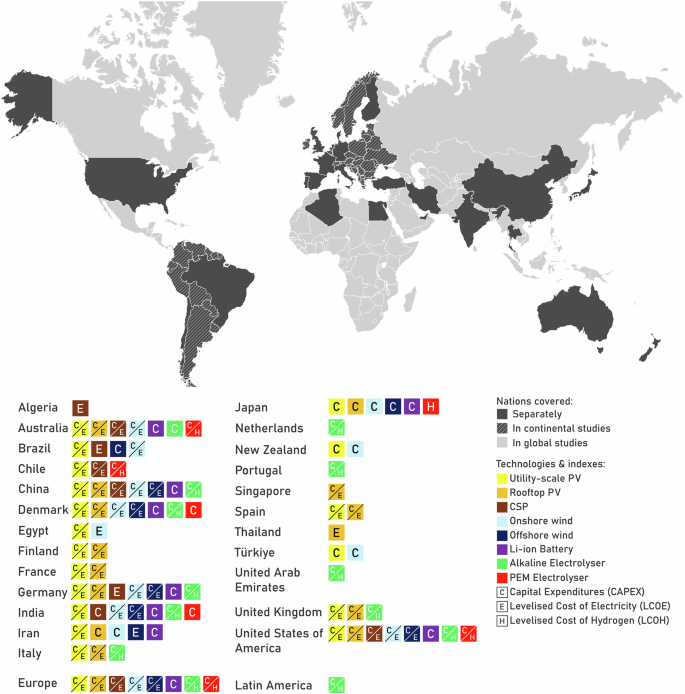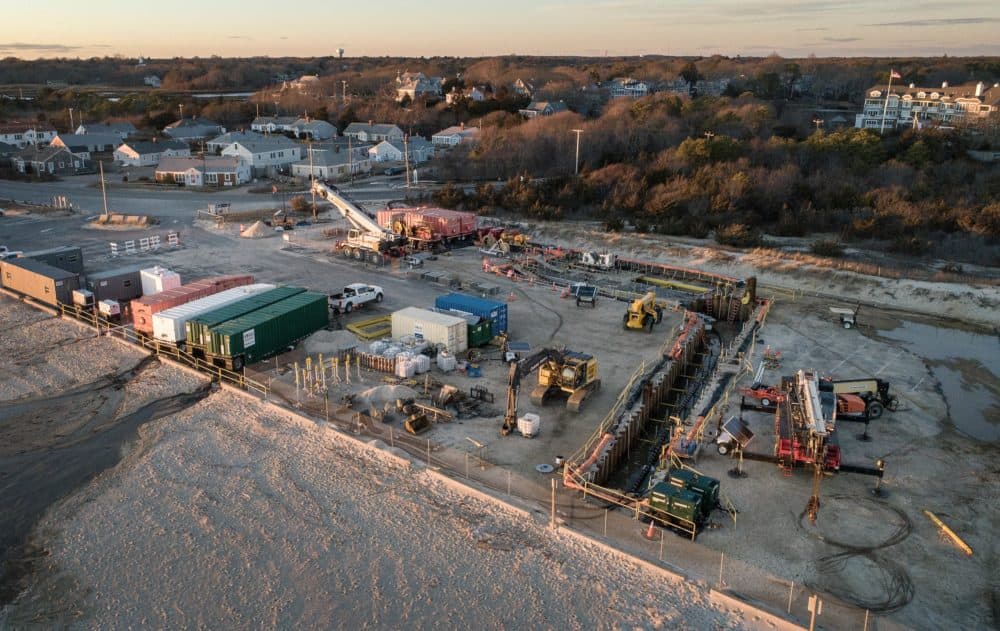Report on the Compressed Air Energy Storage (CAES) Market and its Alignment with Sustainable Development Goals
The global Compressed Air Energy Storage (CAES) market is projected to experience substantial growth, expanding from an estimated USD 0.48 billion in 2025 to USD 1.88 billion by 2030, reflecting a Compound Annual Growth Rate (CAGR) of 31.4%. This expansion is fundamentally driven by the global commitment to achieving Sustainable Development Goals (SDGs), particularly those related to climate action and clean energy.
Contribution to Sustainable Development Goals (SDGs)
The CAES market is a critical enabler for several UN Sustainable Development Goals. Its growth is directly tied to the global transition towards a sustainable and low-carbon economy.
- SDG 7 (Affordable and Clean Energy): CAES technology directly supports the transition to clean energy by providing large-scale, long-duration storage. This addresses the intermittency of renewable sources like wind and solar, ensuring a reliable and stable supply of clean power and enhancing energy security.
- SDG 13 (Climate Action): By facilitating the integration of renewable energy, CAES plays a vital role in decarbonizing the power grid. It provides a clean alternative to fossil fuel-based peaker plants, significantly reducing greenhouse gas emissions and contributing to international climate targets.
- SDG 9 (Industry, Innovation, and Infrastructure): The development and deployment of CAES systems represent an advancement in sustainable infrastructure. This innovation enhances grid resilience and flexibility, which is essential for modernizing energy systems to support sustainable industrialization.
- SDG 11 (Sustainable Cities and Communities): A stable grid powered by renewable energy, supported by CAES, contributes to more sustainable and resilient urban environments by reducing reliance on polluting power sources and ensuring energy availability.
Market Segmentation Analysis
By Technology Type
The market is segmented into adiabatic, diabatic, and isothermal systems. The adiabatic segment held the largest market share in 2024, primarily due to its superior alignment with sustainability principles.
- Adiabatic CAES: This technology captures and stores thermal energy generated during air compression, reusing it during the expansion phase. This process enhances round-trip efficiency and, crucially, eliminates the need for fossil fuels (like natural gas) for heating, making it a zero-emission storage solution that strongly supports SDG 7 and SDG 13.
- Diabatic and Isothermal CAES: These represent other technological approaches within the market, with ongoing innovation aimed at improving efficiency and environmental performance.
By Application
The primary application for CAES is the integration of renewable energy, which dominated the market in 2024.
- Renewable Energy Integration: CAES systems are instrumental in managing the variability of renewable power. They store excess energy generated during periods of high production (e.g., sunny or windy days) and dispatch it during peak demand or when generation is low. This function is essential for maximizing the use of clean energy and achieving the goals of SDG 7.
- Grid Management: CAES also provides essential grid services, such as frequency regulation and capacity support, enhancing overall grid stability and efficiency, which aligns with the infrastructure goals of SDG 9.
Regional Market Dynamics
Asia Pacific Leadership
In 2024, the Asia Pacific region accounted for the largest share of the global CAES market. This dominance is driven by strong government commitments to decarbonization and renewable energy targets, directly supporting SDG 13.
- National Commitments: Countries including China, Japan, South Korea, and India are making significant investments in long-duration energy storage to support their rapidly expanding renewable energy portfolios.
- Key Projects: China is emerging as a global leader, with multiple large-scale CAES demonstration projects designed to help meet its goal of carbon neutrality by 2060.
- Policy Support: Favorable policies, government incentives, and public-private partnerships are accelerating the deployment of CAES as a key technology for achieving regional and national climate and energy goals.
Key Industry Players and Strategic Developments
The market is led by several innovative companies focused on deploying utility-scale, emission-free storage solutions.
Hydrostor (Canada)
A specialist in Advanced-CAES (A-CAES), Hydrostor develops projects that support renewable integration and grid reliability, contributing to SDG 7 and SDG 9. Its technology offers long-duration, zero-emission storage. A notable project includes a 200 MW / 1,600 MWh facility in New South Wales, Australia, designed to support the state’s clean energy transition.
Storelectric LTD. (UK)
Storelectric develops grid-scale storage solutions using Adiabatic CAES and hybrid systems. The company focuses on high-efficiency, low-emission technologies that integrate renewables and provide critical grid services, aligning with SDG 7 and SDG 13. Its recent acquisition of TES CAES Technology Ltd. has strengthened its intellectual property portfolio and capacity to deploy proven CAES designs globally.
Other Key Players
The market also includes other significant players contributing to innovation and deployment, such as:
- APEX CAES (US)
- Corre Energy (Netherlands)
- Siemens Energy (Germany)
- Highview Power (UK)
Analysis of Sustainable Development Goals in the Article
1. Which SDGs are addressed or connected to the issues highlighted in the article?
The article on the Compressed Air Energy Storage (CAES) market highlights issues and solutions that are directly connected to several Sustainable Development Goals. The analysis identifies the following SDGs as being relevant:
- SDG 7: Affordable and Clean Energy: The core theme of the article is the advancement and adoption of CAES as a “clean and long-duration storage solution” to support the integration of renewable energy sources like wind and solar power.
- SDG 8: Decent Work and Economic Growth: The article details significant economic growth within the CAES market, projecting an increase from “$0.48 billion in 2025 to $1.88 billion by 2030.” It also explicitly mentions job creation, such as one project creating “750 construction-phase jobs and 70 ongoing operational roles,” and generating “USD 670 million in local economic benefits.”
- SDG 9: Industry, Innovation, and Infrastructure: The text focuses on technological innovation (e.g., “adiabatic CAES”) and the development of resilient energy infrastructure. CAES systems are presented as a key component for “grid modernization initiatives,” ensuring “grid stability,” and strengthening “grid resilience and energy security.”
- SDG 13: Climate Action: The primary driver for the CAES market growth, as stated in the article, is the global effort to combat climate change. The technology is crucial for meeting “ambitious climate targets to cut carbon emissions” and achieving “global decarbonization goals” by reducing dependence on fossil fuels.
2. What specific targets under those SDGs can be identified based on the article’s content?
Based on the article’s discussion of CAES technology, its applications, and market drivers, several specific SDG targets can be identified:
- Under SDG 7 (Affordable and Clean Energy):
- Target 7.2: By 2030, increase substantially the share of renewable energy in the global energy mix. The article directly supports this target by describing CAES as a technology that plays a “vital role in supporting renewable integration” and addressing the “intermittency challenges of wind and solar power.”
- Target 7.a: By 2030, enhance international cooperation to facilitate access to clean energy research and technology… and promote investment in energy infrastructure and clean energy technology. The article highlights this through examples of “public-private investments,” funding from entities like “Goldman Sachs Asset Management,” and the global nature of the market with key players from Canada, the US, the UK, and other nations investing in and deploying these technologies.
- Under SDG 8 (Decent Work and Economic Growth):
- Target 8.2: Achieve higher levels of economic productivity through diversification, technological upgrading and innovation. The article showcases this through the development and commercialization of “advanced compressed air energy storage (A-CAES) technology” and “adiabatic systems,” which represent technological innovation driving a new economic sector.
- Target 8.4: Improve progressively, through 2030, global resource efficiency in consumption and production and endeavour to decouple economic growth from environmental degradation. The growth of the CAES market, which is projected to reach “$1.88 billion by 2030,” is fundamentally linked to environmental benefits like cutting emissions and supporting renewables, perfectly illustrating this decoupling.
- Under SDG 9 (Industry, Innovation, and Infrastructure):
- Target 9.1: Develop quality, reliable, sustainable and resilient infrastructure… to support economic development and human well-being. The article emphasizes that CAES projects are designed to “strengthen grid reliability,” “support grid stability,” and enhance “system flexibility,” which are all characteristics of resilient infrastructure.
- Target 9.4: By 2030, upgrade infrastructure and retrofit industries to make them sustainable… with greater adoption of clean and environmentally sound technologies. The article describes CAES as a “sustainable alternative to conventional peaker plants” and a “zero-emission storage technology” that enables the clean energy transition, directly aligning with this target.
- Under SDG 13 (Climate Action):
- Target 13.2: Integrate climate change measures into national policies, strategies and planning. The article states that the market is driven by governments implementing “stringent environmental regulations and setting ambitious climate targets.” It also notes that “favorable policy frameworks” and “government incentives” are accelerating the deployment of CAES as a tool to meet these national climate goals.
3. Are there any indicators mentioned or implied in the article that can be used to measure progress towards the identified targets?
The article provides several quantitative and qualitative indicators that can be used to measure progress towards the identified SDG targets:
- Market Growth and Investment: The projected market growth from “$0.48 billion in 2025 to $1.88 billion by 2030” at a “CAGR of 31.4%” serves as a direct indicator for the adoption of clean technology (Target 9.4) and investment in clean energy infrastructure (Target 7.a).
- Energy Storage Capacity: The specific capacity of projects, such as the Silver City project providing “1,600 MWh (8 hours) of long-duration, emission-free electricity storage,” is a measurable indicator of the increased capacity to integrate renewable energy into the grid (Target 7.2).
- Job Creation and Economic Impact: The article provides concrete numbers that can be used as indicators for economic growth and decent work (SDG 8). These include the creation of “750 construction-phase jobs and 70 ongoing operational roles” and the generation of “USD 670 million in local economic benefits” from a single project.
- Policy and Regulation Implementation: The mention of “stringent environmental regulations,” “favorable government policies,” and “incentives and funding for large-scale storage projects” serves as a qualitative indicator of national efforts to integrate climate change measures into planning (Target 13.2).
- Reduction of Fossil Fuel Dependence: The article implies progress by stating that CAES helps in “reducing dependence on natural gas” and serves as a “sustainable alternative to conventional peaker plants,” which are typically fossil-fuel-powered. This indicates a shift towards cleaner infrastructure (Target 9.4).
4. Summary Table of SDGs, Targets, and Indicators
| SDGs | Targets | Indicators Identified in the Article |
|---|---|---|
| SDG 7: Affordable and Clean Energy | 7.2: Increase the share of renewable energy. 7.a: Promote investment in clean energy technology. |
|
| SDG 8: Decent Work and Economic Growth | 8.2: Achieve higher economic productivity through innovation. 8.4: Decouple economic growth from environmental degradation. |
|
| SDG 9: Industry, Innovation, and Infrastructure | 9.1: Develop reliable and resilient infrastructure. 9.4: Upgrade infrastructure and adopt clean technologies. |
|
| SDG 13: Climate Action | 13.2: Integrate climate change measures into national policies. |
|
Source: openpr.com





